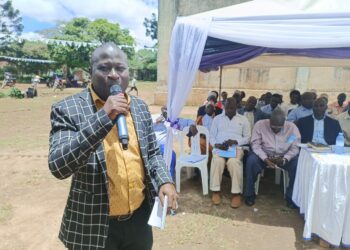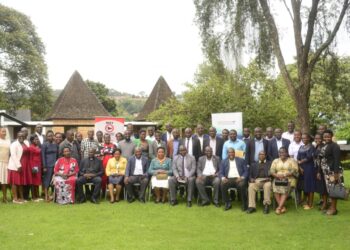In a momentous decision, the United Nations Educational, Scientific and Cultural Organization (UNESCO) announced on Tuesday the removal of the Kasubi site, home to the sacred tombs of Buganda’s revered rulers, from the list of World Heritage in Danger.
This historic site, nestled in the hills overlooking Uganda’s capital Kampala, boasts a collection of circular structures crafted from wood, reeds, and thatched roofs, earning its esteemed World Heritage status in 2001.
Tragedy struck in March 2010 when a devastating fire ravaged the main edifice, known as Muzibu-Azaala-Mpanga, housing the resting places of four Buganda kings. This catastrophe marked a somber chapter in the annals of Uganda’s cultural legacy.
However, a collaborative international effort, buoyed by generous funding, culminated in the successful completion of the reconstruction project in the summer of 2023.
This monumental achievement was hailed by the World Heritage Committee, currently convened in Riyadh until September 25th, as a testament to the dedication of Ugandan authorities, heritage professionals, and the indomitable spirit of local communities.
Unesco’s Director General, Audrey Azoulay, lauded the collective triumph, emphasizing the pivotal roles played by Ugandan stakeholders.
She stated, “This is excellent news for the entire international community, at a time when we have made it a priority for World Heritage to give more space to African sites,” echoing a poignant reminder that nearly half of the sites listed on the World Heritage in Danger roster are situated on the African continent.
The former palace of the “kabakas”, originally constructed in 1882 and subsequently transformed into a regal sepulcher in 1884, stands as a living testament to the architectural prowess cultivated by the formidable Buganda kingdom over eight centuries.
UNESCO reveres it as an exemplary representation of Buganda’s unique architectural legacy.
The conflagration of 2010 echoed through the hearts of the Baganda, the indigenous people of Buganda, and a prominent ethnic group within Uganda.
This tragic event unfolded against a backdrop of strained relations between the government and the Baganda, precipitated by a travel embargo imposed on their monarch in September 2009. This restrictive measure led to widespread unrest, culminating in tragic loss with at least 27 lives lost in the ensuing upheaval.
The restoration of the Kasubi tombs stands as a beacon of hope, symbolizing the indomitable spirit of a nation and its commitment to safeguarding its rich cultural tapestry.
This momentous milestone not only preserves the legacy of Buganda’s kings but also reaffirms Unesco’s dedication to championing the preservation of Africa’s invaluable heritage.
Do you have a story in your community or an opinion to share with us: Email us at editorial@watchdoguganda.com













